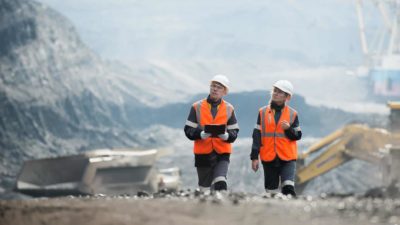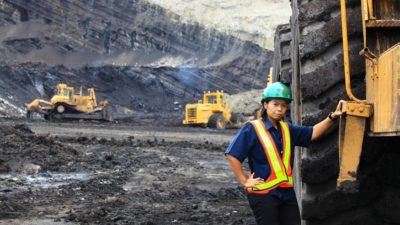The BHP Group Ltd (ASX: BHP) share price is off to a strong start in April
Shares in the S&P/ASX 200 Index (ASX: XJO) iron ore miner closed up 1.4% on 28 March, the last trading day of the month, at $44.27. In lunchtime trade today, shares are swapping hands for $45.20 apiece, up 2.1%.
For some context, the ASX 200 is up just 0.06% at this same time.
As for the month just past…
BHP pays dividend and weathers iron ore storm
The BHP share price closed out February at $43.93.
That means shares in the ASX 200 mining giant gained a slender 0.8% in March.
But let's not forget the dividend.
BHP paid a fully franked interim dividend of 72 US cents per share (AU$1.10 per share) on 28 March. The stock traded ex-dividend on 7 March.
If we add that back in, then BHP stock gained an accumulated 3.3% over the month, plus the potential tax benefits from those franking credits.
What now for the BHP share price?
BHP managed to weather the iron ore and nickel storms of March in good form.
Iron ore was trading for just over US$117 per tonne at the beginning of the month before briefly dipping below the psychologically important US$100 per tonne level mid-month.
The steel-making metal – BHP's top revenue earner – has been on a bit of a rollercoaster since then.
After slipping back below US$100 per tonne yesterday, iron ore was trading for US$101.65 per tonne overnight.
Of course, that's still well down from the more than US$140 that same tonne was worth at the start of 2024.
As for how iron ore will impact the BHP share price in the months ahead, much of that will depend on China.
The nation's steel-hungry real estate markets remain depressed. But its industrial sector is heating up.
If China's government ups its stimulus measures, iron ore prices could well rebound, boosting the bottom line for BHP.
But not everyone is convinced the industrial metal will return to early 2024 levels.
Katana Asset Management portfolio manager Romano Sala Tenna labelled the recent strength in iron ore prices as "abnormal" in the face of China's faltering property markets.
According to Sala Tenna (quoted by The Australian Financial Review):
We think the drop has been very reasonable given how abnormal the price had remained before now. We wouldn't be surprised to see it go lower.
This could impact higher-cost producers and eventually see a pullback in supply if prices don't hold up.
"We may be starting to get close to the cost curve for some of the higher-cost Chinese producers, so we may start to see some pushback," Sala Tenna added.
However, as the lowest-cost iron ore producer in the world, BHP is well-positioned for any weakness in prices.
Another headwind for the BHP share price in April to keep an eye on in the months ahead is nickel.
Last month the ASX 200 miner addressed the pressure from a global oversupply of nickel, fuelled by cheap 'dirty nickel' out of Indonesia, backed by Chinese companies.
This has impacted its Nickel West operations, with the miner planning to mothball the project until nickel prices recover.
"30% of the Australian nickel market has gone offline and another 30% is under pressure," BHP's retiring CFO David Lamont said.
It could be some time before BHP shares enjoy renewed tailwinds from higher nickel prices.
Over the weekend, Indonesia doubled down on its nickel goals, with the government aiming to quadruple the nation's nickel output by the end of the decade.









